The National Active School Streets Initiative (School Streets) is a 4-year program that aims to create car-free streets in front of schools at the start and end of the school day. The School Streets team is spread across Canada, with representatives from Green Communities Canada, 8 80 Cities, Centre d’écologie urbaine, The Society for Children and Youth of BC, University of British Columbia, Toronto Metropolitan University, Queen’s University, and Université de Montréal. As we entered year 2 of the program, we recognized the need to bring our cross-country team together, in person, to reflect on the program so far and collaborate on its next steps. In September 2025, we hosted the first in-person gathering of the School Streets team in Montréal.
What We Did
This one-and-a-half-day gathering included program reflections, strategic planning activities, a knowledge mobilization workshop, and sustainability planning discussions. We also had the opportunity in Montréal to visit a few children-friendly spaces and explore some of the best pedestrianized streets in Canada.
Session 1: Looking Back
There are three School Streets teams – Administrative, Technical, and Research. To begin our gathering, each of these three teams presented the work they have completed so far. These presentations built cross-team knowledge of the program and set up a foundation for the remainder of the sessions. These presentations were followed by an entire team reflection on School Streets so far, discussing two key questions: what has been going well, and what areas can be improved going forward.
Session 2: Looking Ahead
In small team working groups, we developed a list of indicators to measure the performance and success of our program objectives.
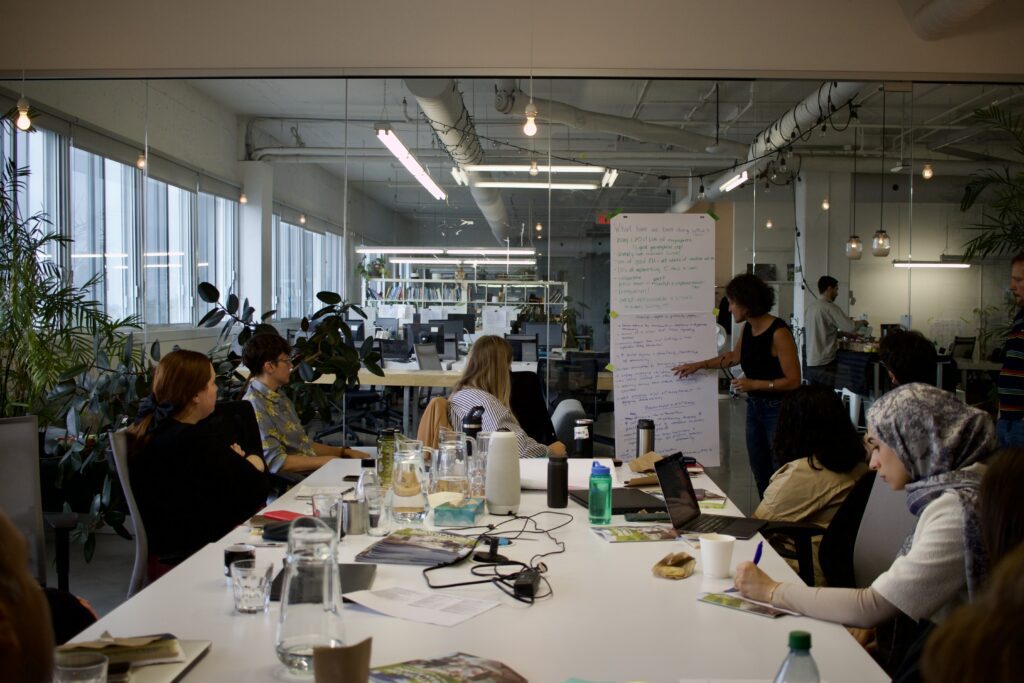
Small team report-back on how to measure the performance and success of our program objectives.
Session 3: Exploring Montréal by Bike!
To conclude day one, Centre d’écologie urbaine showcased Montréal’s well-established bikeshare system and biking infrastructure by leading a bike tour to 3 sites in the Plateau Mont-Royal area.
The first site was jardin du petit monde à bicyclette. Jardin du petit monde à bicyclette is a Vélo Québec project that transformed a previous parking lot into a cycling education park for children to practice riding their bikes and learn the rules of the road. This cycling education park includes mini streets, mini signs, and has scooters, balance bikes, and bicycles available to borrow and use in the space for free.
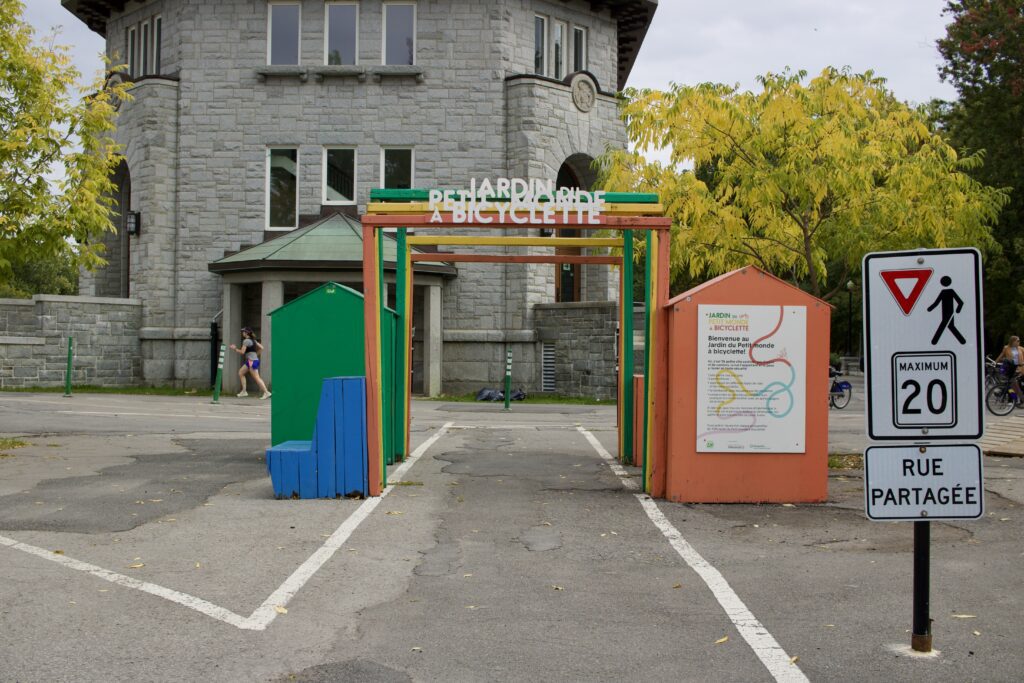
The entryway to jardin du petit monde à bicyclette, with a mini speed limit sign.
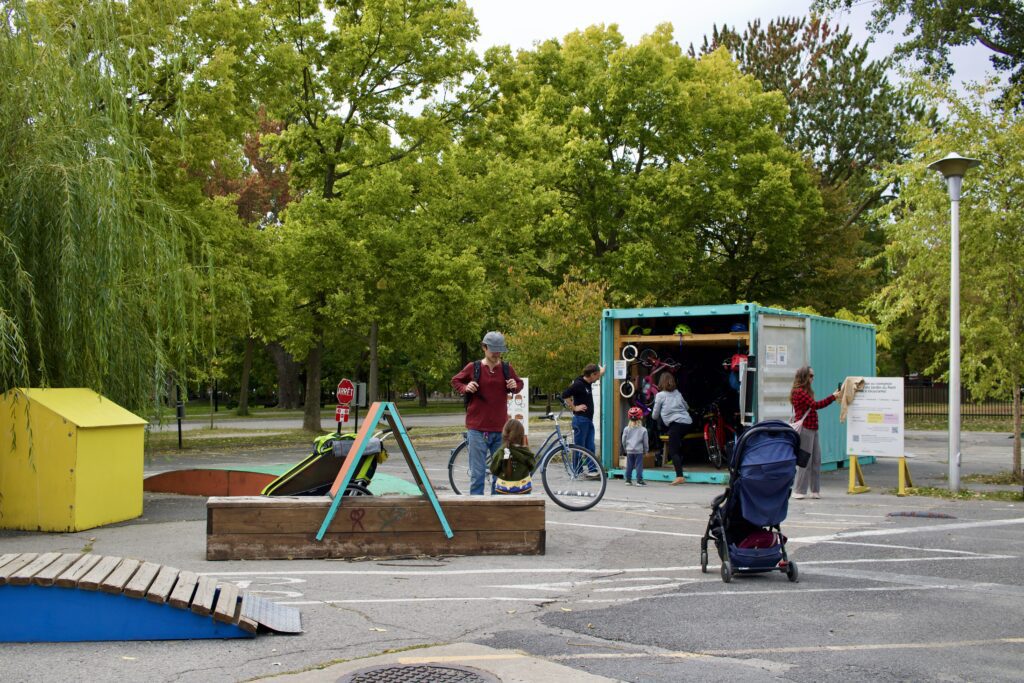
Families borrowing free bicycles from the bike shed on site of jardin du petit monde à bicyclette.
After that, we visited Saint-Enfant Jésus Primary School, the school that was selected as the future School Street site in Plateau Mont-Royal.
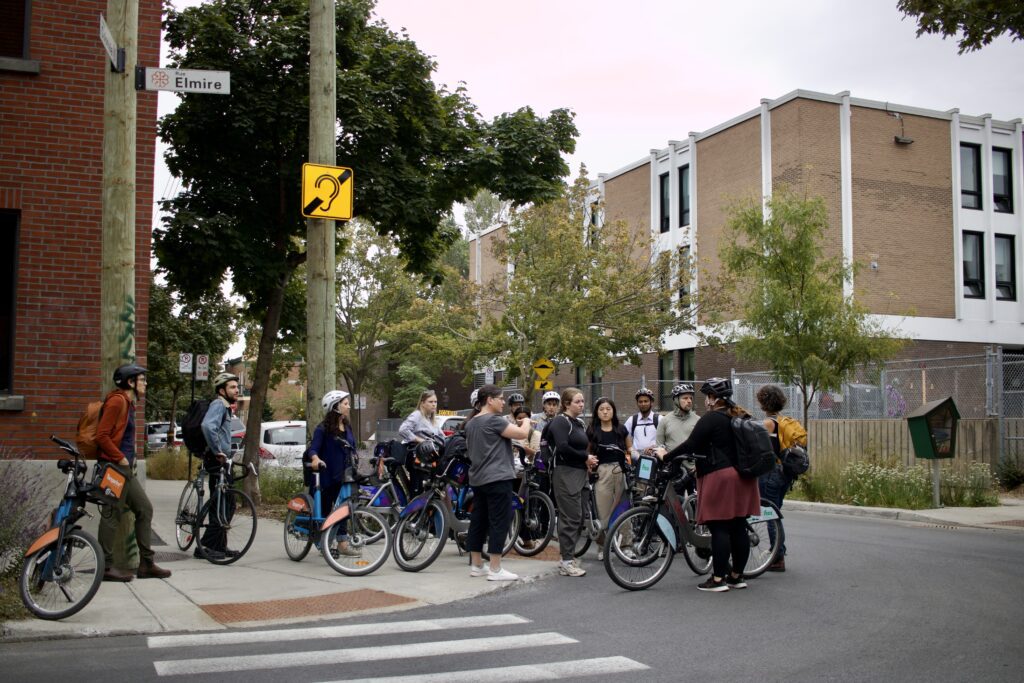
The School Streets team learning about the site of the future School Street, Saint-Enfant Jésus Primary School.
The bike tour concluded at Plateau Mont-Royal’s permanent School Street site, Place de l’Ange Cornu. Place de l’Ange Cornu is the first School Street implementation as part of the School Streets program and the first permanent School Street in the Plateau Mont-Royal area.
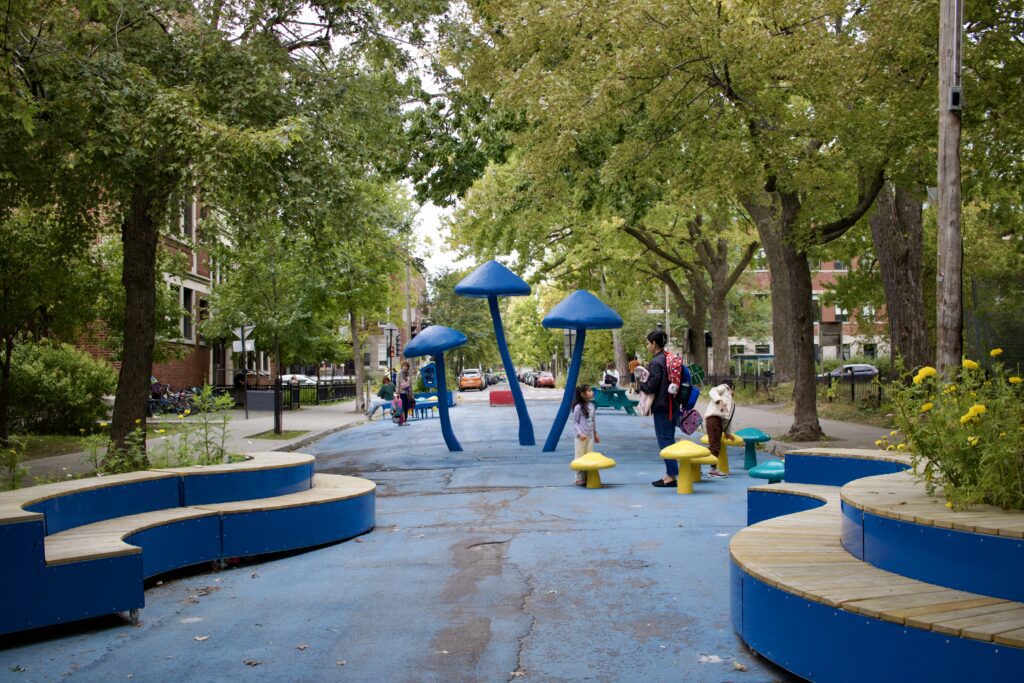
An image of Place de l’Ange Cornu, the site of Plateau Mont-Royal’s permanent School Street.
Place de l’Ange Cornu closes a part of rue de Lanaudière to give the children at Paul-Bruchési primary school more space to play. The School Street incorporates mushroom sculptures to encourage children’s imagination of the space as an enchanted forest, and also includes street furniture, planter boxes with greenery, and a microlibrary.
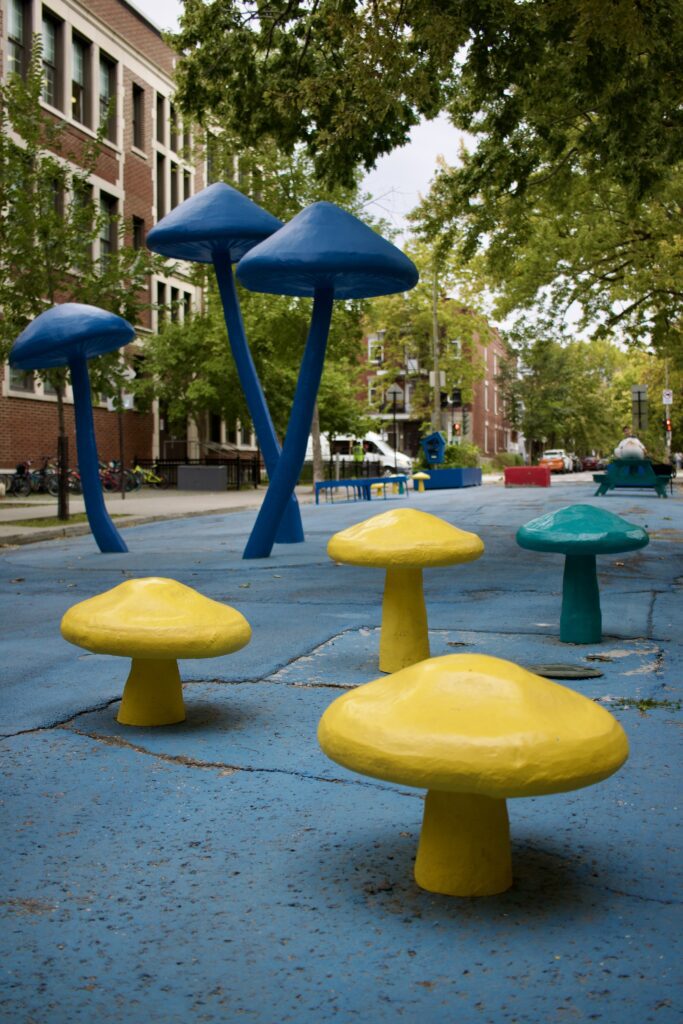
The mushroom sculptures that were installed to create an imaginative space for children to play.
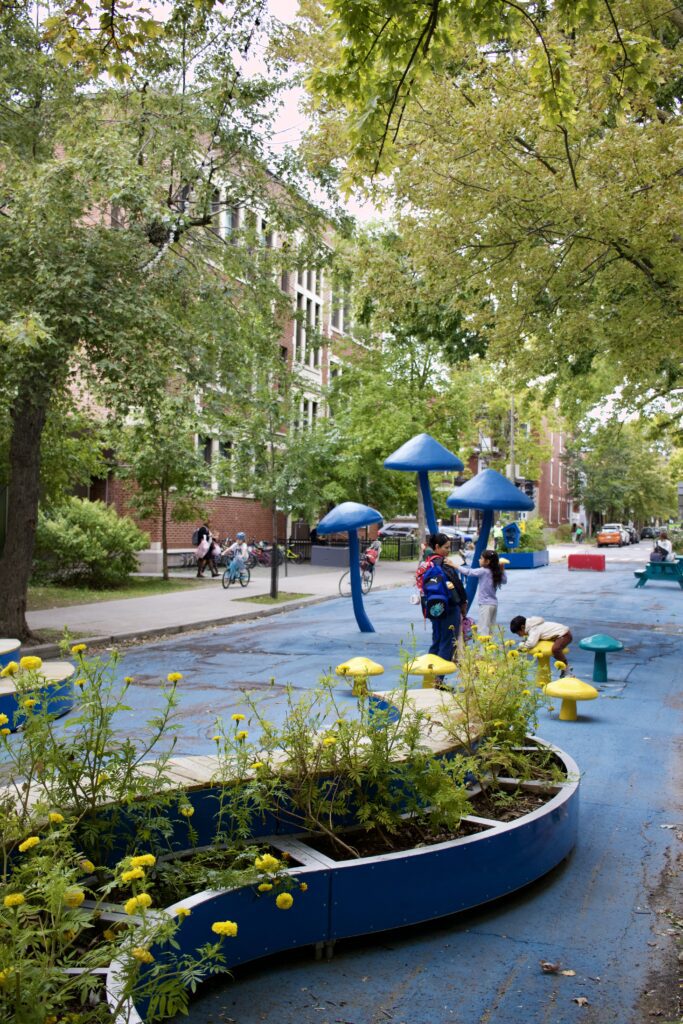
One of the planter boxes that was installed at Place de l’Ange Cornu. The greenery in these planter boxes is maintained by students at Paul-Bruchési Primary School.
Session 4: Knowledge Mobilization & Impact Reporting
On the morning of day two, 8 80 Cities led a workshop focused on how we communicate the impact of School Streets publicly. We collaborated on exercises to frame the problem that School Streets seeks to solve and explored the problem from the point of view of children. The session concluded with an exploration of what success would look like for the program at the end of the 4-year period.
Session 5: Policy Pathways & Sustainability Planning
Green Communities Canada and the Université de Montréal joined forces to lead a session about the longer-term sustainability and longevity of the School Streets movement. We dug into how we can build School Streets beyond the 4-year period of the current program. We discussed the importance of policy shifts and how we can collectively generate an enduring nationwide movement for School Streets.
What’s Next?
The gathering in Montréal was a great opportunity for the School Streets team to reflect and realign the program’s overarching vision and goals. As we embark on the next 2 years of the program, we look forward to taking the learnings from this gathering to help us build the momentum for a nationwide School Streets movement.
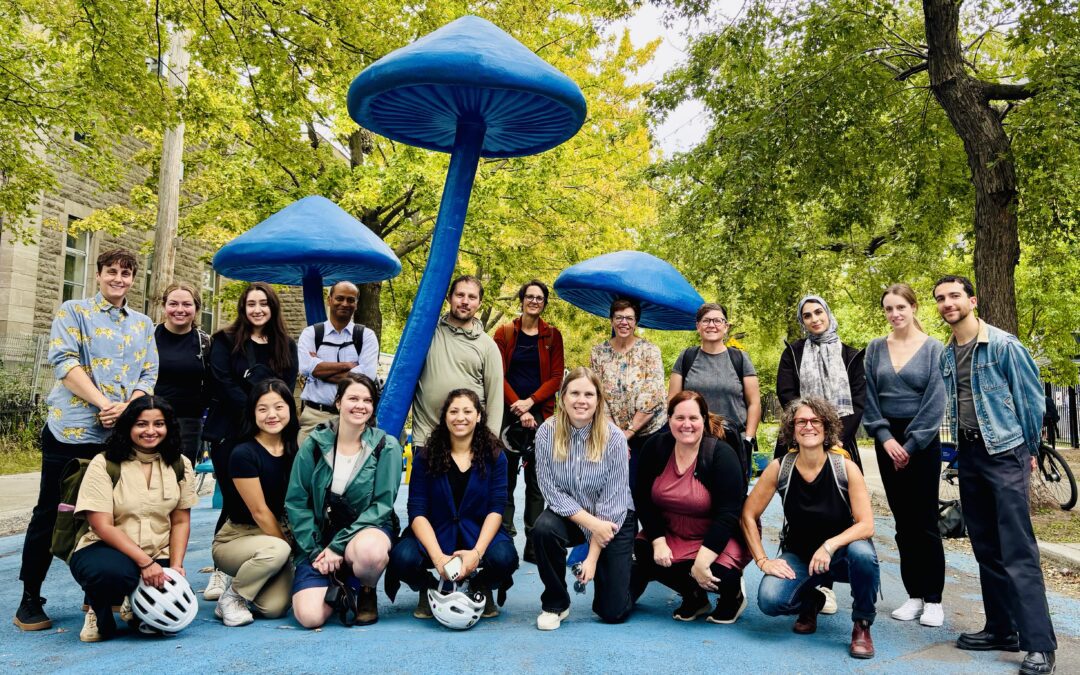
Recent Comments